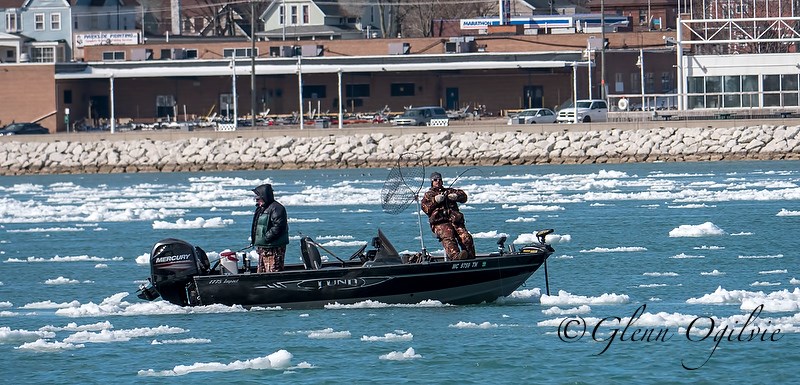Troy Shantz
When anglers set their downriggers to start the 43rd annual Bluewater Anglers Salmon derby on Friday, it’s possible a few of the lucky ones will land an Atlantic salmon.
That’s because efforts to reintroduce a fish that was once native to the Great Lakes but wiped out in the 19th century is showing signs of success.
Already, the occasional Atlantic salmon is being caught near the Blue Water Bridge. And the hope is that a sustainable population can once again be established in the Great Lakes, said Derby co-chair Paul Heckley.
“It’s the one we really want for sports fish, for the fight.”
Most Atlantic salmon, the largest salmon species, begin life in freshwater streams and migrate to the ocean. But there are plenty of examples of landlocked populations, including a now extinct population that was living in Lake Ontario when Europeans arrived.
They were once so abundant they were caught by the barrelful, but as settlements spread the salmon numbers dwindled.

Consequently, many of the fish anglers converging on the Sarnia area will catch during the May 3-12 Derby will be hatchery-raised and non-native Chinook salmon, rainbow trout and brown trout.
After years of stream rehabilitation and improved pollution control measure throughout the watersheds, the Ministry of Natural Resources is reintroducing young Atlantic salmon into tributaries in hopes they will begin reproducing naturally, according to the Lake Ontario Atlantic Salmon Restoration Program.
The goal of Michigan hatcheries this year is to raise 180,000 yearlings, according to the Lake Huron Citizens Fishery Advisory Committee. Heckley said hatcheries in Lexington, Port Sanilac and Harbour Beach are part of that effort.
Any angler that catches an Atlantic salmon is asked to freeze the head and bring it to Bluewater Anglers’ Point Edward hatchery.
The advisory committee believes a viable population is beginning to take hold. The large and adaptable fish typically feed on smelt but is also reportedly eating invasive gobies.
The Bluewater Anglers aren’t raising Atlantic salmon, Heckley noted, but nearly 150,000 other sport fish were released last week through the local hatchery program.
Last year’s Derby had 1,608 fish entered in competition, the most since 2012. And the top fish, a 26.64-pound lake trout, was the heaviest in a decade.
This year’s Derby has more than $40,000 in prizes up for grabs, including $5,000 for the biggest salmon.
For registration and more Derby information, visit www.bluewateranglers.com.
